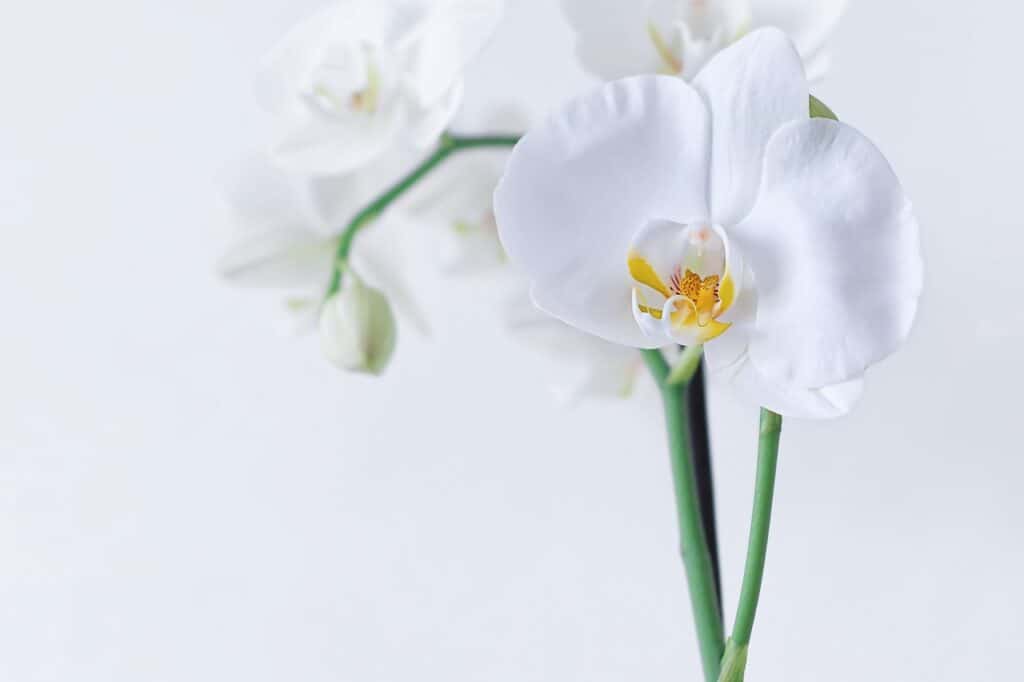Orchids are one of the most popular houseplants. They feature stunning flowers, unique textures, and a wide range of colors. However, if your orchid is exhibiting signs of poor health, you may feel discouraged or overwhelmed. But don’t despair just yet – it’s possible to revive a dying orchid. With the right care and attention, you can bring your orchid back to life and enjoy its beauty for years to come. In this post, we’ll provide essential tips and tricks for reviving a dying orchid. We’ll cover everything from identifying the problem to advanced techniques for saving an almost-dead orchid.

Identify the Problem: Signs of a Dying Orchid
Before you can revive your dying orchid, you need to identify the problem. Here are some common signs that your orchid is in poor health:
– Wilting or yellowing leaves
– Spots or discoloration on the leaves
– Stunted growth
– Lack of new growth
– Dropping flower buds
If you notice any of these signs, you should take action to revive your orchid. The earlier you intervene, the better the chances of success.
Understanding the Common Causes of Dying Orchids
Orchids are sensitive plants that require specific conditions to thrive. Here are some common causes of dying orchids:
– Overwatering or underwatering: Orchids require regular but moderate watering. Overwatering can lead to root rot, while underwatering can cause the plant to dry out.
– Insufficient light: Orchids need bright, indirect light to grow properly. Lack of light can cause the plant to weaken and stop growing.
– Poor air circulation: Orchids need fresh air to thrive. Poor air circulation can lead to mold, mildew, and other diseases.
– Incorrect temperature: Orchids prefer warm temperatures during the day and cool temperatures at night. Extremes in temperature can stress the plant and cause it to stop growing.
– Pests and diseases: Orchids can be prone to pests like scale insects, spider mites, and mealybugs. They can also develop diseases like fusarium wilt and bacterial rot if not cared for properly.
Understanding the root cause of your orchid’s poor health is essential for developing a treatment plan.
Reviving Your Dying Orchid: Basic Care Tips
Reviving a dying orchid requires providing it with proper care. Here are some basic care tips to help your orchid recover:
Watering and Feeding Your Orchid: Dos and Don’ts
Watering and feeding are essential to revive a dying orchid. However, it’s essential to do it right. Here are some dos and don’ts to keep in mind:
Dos:
– Water your orchid once a week using room temperature water.
– Allow water to drain completely from the pot.
– Use an orchid-specific fertilizer to feed your plant every two weeks during the growing season.
Don’ts:
– Don’t overwater your orchid as this can cause root rot.
– Don’t use tap water as it contains chlorine and other chemicals that can harm orchids.
– Don’t fertilize your orchid during the dormant season.
Adjusting Lighting and Temperature: How to Provide Optimal Conditions
Lighting and temperature are essential for reviving a dying orchid. Here are some tips for providing optimal conditions for your plant:
– Place your orchid in a bright, indirect light.
– Avoid placing it in direct sunlight, as this can damage the leaves.
– Keep your orchid in a warm place with relatively stable temperatures.
– Avoid exposing it to drafts or extreme temperatures, which can cause it to wilt or drop leaves.
Following these tips should help your orchid recover and begin to grow again.

Advanced Techniques: Saving an Almost-Dead Orchid
If your orchid is almost dead, it may require more advanced techniques to revive it. Here are some advanced tips for saving an almost-dead orchid:
Pruning and Repotting: When and How to Do It
If your orchid is on the brink of death, pruning, and repotting can help restore it to health. Here’s how to do it:
– Remove dead or damaged leaves or stems to help the plant conserve energy and promote new growth.
– Carefully remove the plant from its pot and inspect the roots.
– If the roots are brown or mushy, trim away the dead parts and repot the orchid in fresh orchid mix.
– Water the plant carefully, giving it enough moisture to survive while avoiding overwatering.
Troubleshooting: Dealing with Pests and Diseases
Pests and diseases can cause a lot of damage to orchids. If your orchid is suffering from pests or disease, take these steps:
– Identify the pest or disease.
– Remove and discard affected parts of the plant.
– Use appropriate treatments or remedies to eradicate the pest or disease, and follow the instructions carefully.
– Provide ongoing care to the orchid to help prevent future infestations.
With these advanced techniques, you can revive an almost-dead orchid and bring it back to life.
Conclusion: Caring for Your Revived Orchid
Reviving a dying orchid requires patience, care, and attention. By identifying the root cause of your orchid’s poor health, providing proper care, and using advanced techniques, you can revive your plant and enjoy its beauty for years to come. Once your orchid has recovered, continue to care for it properly by watering and feeding it regularly, adjusting its light and temperature, and monitoring for pests and diseases. With the right care, your revived orchid can thrive and continue to bloom for years to come.

